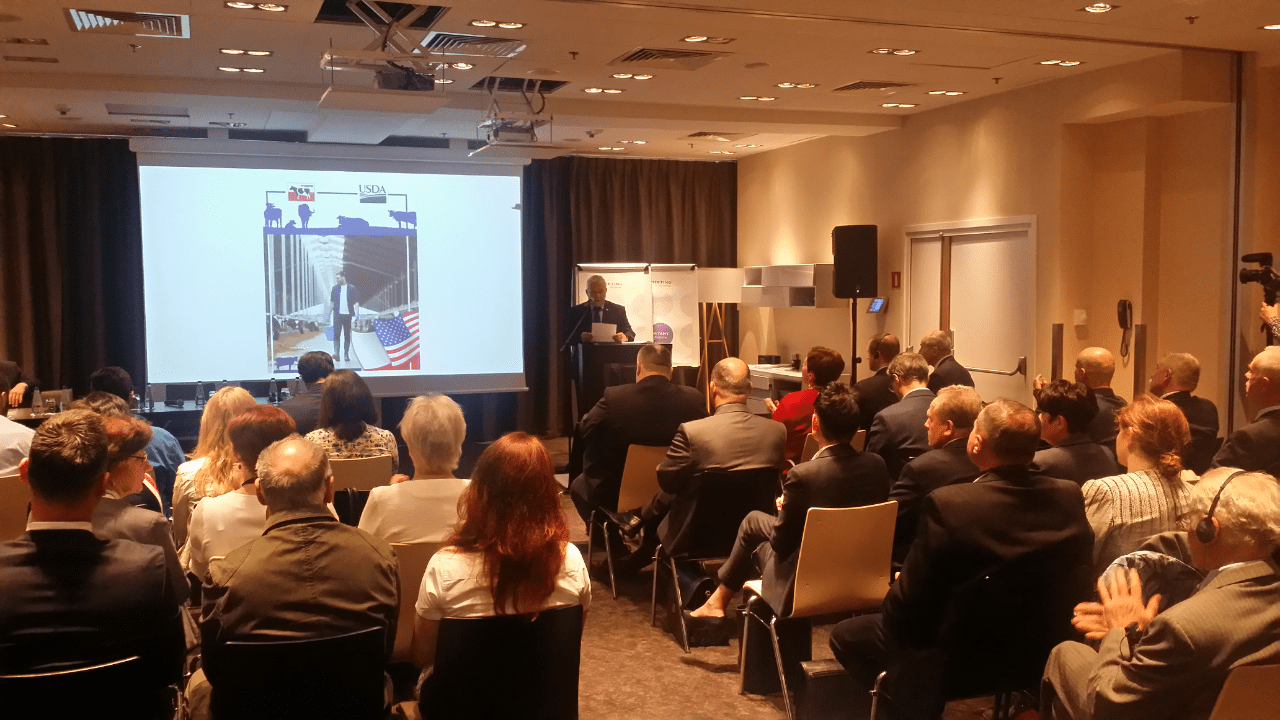Polish Dairy Customers Attend U.S. Dairy Genetics & Nutrition Training
- Category:
- Animal Utilization
- General News

In early February, Jonn Slette, U.S. Agricultural Attaché in Warsaw, Poland, wrote, “We here in Central and Eastern Europe are working to add value to USSEC’s regional goals and we’re developing something we hope you’ll find interesting.” Mr. Slette was referring to a dairy cattle genetics and nutrition road show to be held in Poland, Romania, and Bulgaria. USSEC provided its support to the concept presented by the Foreign Agricultural Service (FAS).
In April, the Polish leg of the project and a two-day training workshop with a mix of classroom and practical application was held in Warsaw, followed by a study tour in the Sokołów area in the eastern part of Poland. The target audience who attended the event included dairy (and some beef) farmers, local producers’ associations, cooperatives, some local extension officials, and nutritional advisors.
The Polish seminar gathered almost 100 individuals and after a joint welcome by Leszek Hanzlik, President, Polish Federation of Cattle Breeders & Milk Producers, and Mr. Sleete, a series of presentations was offered.
Jay Weiker, President, National Association of Livestock Breeders, explained new technologies in dairy cattle breeding in the U.S. to local industry members.
The focus of the event then transferred to the practical aspect of dairy cattle nutrition with a review of feeds used by U.S. dairy growers. Most of the lecturing was done by Dr. Scott Jensen, Idaho State University / Extension Centre, followed by Jerzy W. Kosieradzki, USSEC Technical Director - Northeast Europe, who spoke on the nutritional and economic side of soybean products and other protein sources used in dairy nutrition. Speaking about the advantages of U.S. soybeans, meal, and hulls, Mr. Kosieradzki highlighted international and European scientific evidence on biotech events in corn and soybeans that proved they were safe for livestock, humans, and the environment. U.S. farmers’ sustainable soybean and corn production was communicated to the local customers as well.
During and after the training sessions, local media conducted interviews with the speakers, organizers of the event, and industry leaders, providing a range of the knowledge taught.
On the following day, the participants and trainers visited a dairy farm to follow up on the theoretical knowledge with practical training.




